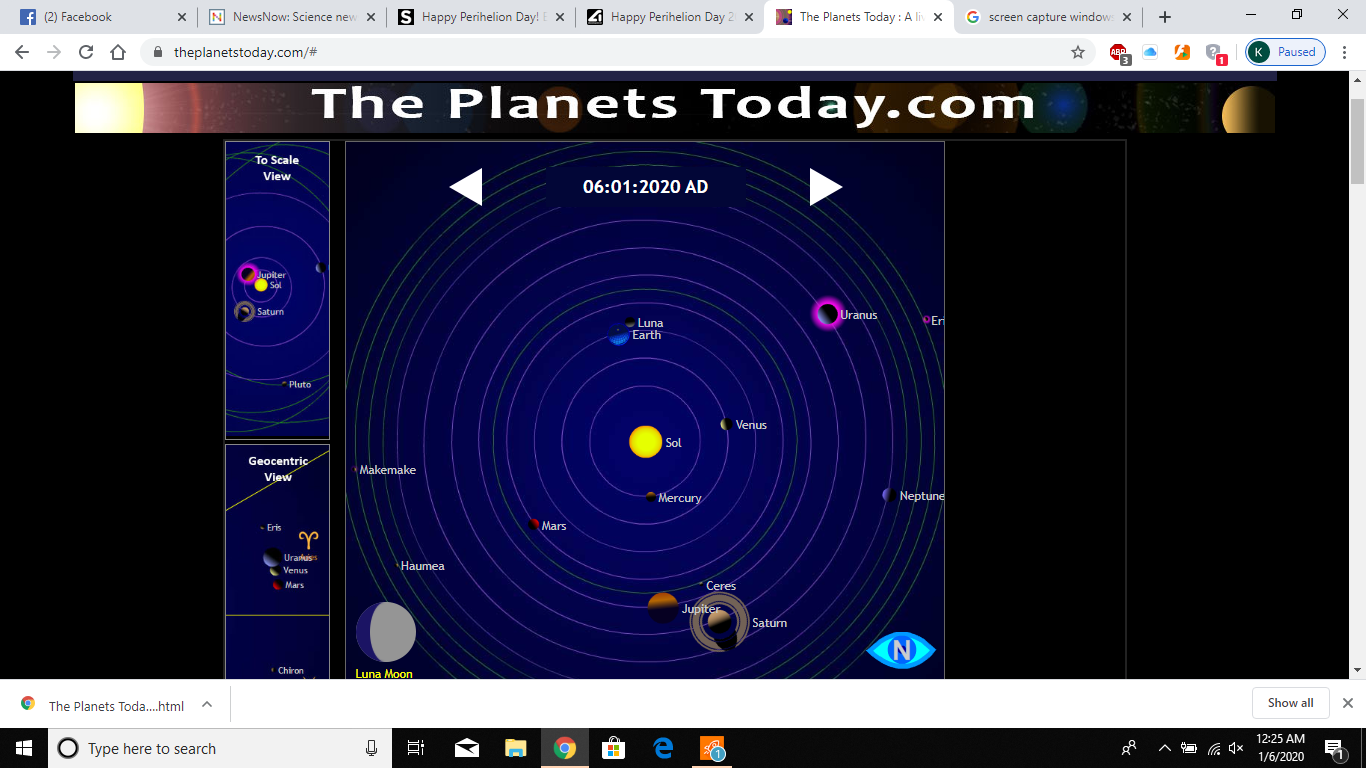It looks like you're using an Ad Blocker.
Please white-list or disable AboveTopSecret.com in your ad-blocking tool.
Thank you.
Some features of ATS will be disabled while you continue to use an ad-blocker.
4
share:
I don't know if it makes a difference in Australia during the summer months being a little closer to the sun, but making the season a little shorter
as we speed up when going around the sun ,much like NASA uses planetary bodies to sling shot probes to other planets.
But, this doesn't cause our seasons, as that is caused by the Earth's tilt. No relation what so ever.

www.space.com...
www.theplanetstoday.com...
But, this doesn't cause our seasons, as that is caused by the Earth's tilt. No relation what so ever.

There's nothing unusual about the planet being a little closer to the sun; it's a normal occurrence that happens near the start of the calendar year. Earth travels in an elliptical orbit, so its distance from the sun changes throughout its 365.25 day journey. (Side note: the quarter days are what prompt a leap year every four years.)
Earth reaches perihelion — the term for its closest approach to the sun — on Sunday (Jan. 5) at 2:48 a.m. EST (0748 GMT), according to EarthSky.org. For those living on the U.S. West Coast, the moment occurs on Jan. 4 at 11:48 p.m. PST. Half a year later, on July 4, Earth will reach aphelion — its most distant point from the sun.
www.space.com...
www.theplanetstoday.com...
edit on 5-1-2020 by Groot because: (no reason given)
edit on 5-1-2020 by Groot because: (no reason given)
originally posted by: Groot
I don't know if it makes a difference in Australia during the summer months being a little closer to the sun, but making the season a little shorter as we speed up when going around the sun ,much like NASA uses planetary bodies to sling shot probes to other planets.
But, this doesn't cause our seasons, as that is caused by the Earth's tilt. No relation what so ever.
There's nothing unusual about the planet being a little closer to the sun; it's a normal occurrence that happens near the start of the calendar year. Earth travels in an elliptical orbit, so its distance from the sun changes throughout its 365.25 day journey. (Side note: the quarter days are what prompt a leap year every four years.)
Earth reaches perihelion — the term for its closest approach to the sun — on Sunday (Jan. 5) at 2:48 a.m. EST (0748 GMT), according to EarthSky.org. For those living on the U.S. West Coast, the moment occurs on Jan. 4 at 11:48 p.m. PST. Half a year later, on July 4, Earth will reach aphelion — its most distant point from the sun.
www.space.com...
www.theplanetstoday.com...
My first day back at work after the break. Now I have good reason for it to seem so long.
new topics
-
The Carpet Coating that Attacked the Environment
Medical Issues & Conspiracies: 2 hours ago -
Microplastics in your drinks
Medical Issues & Conspiracies: 3 hours ago -
Happy Rush Day 2024 - 2112
Music: 8 hours ago -
China Working on 'Drone Mothership' Plane
Military Projects: 8 hours ago -
12-21-24 Usyk-Fury II
World Sports: 11 hours ago
4
